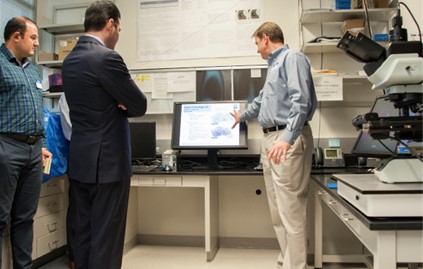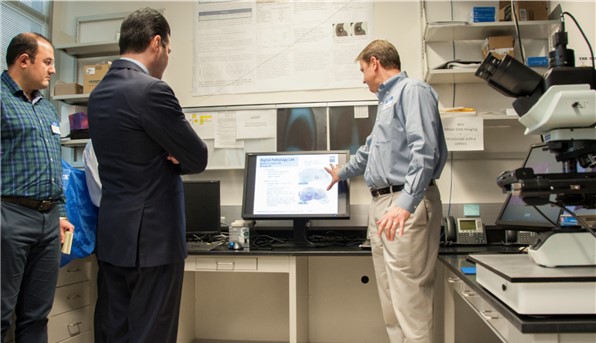
Does the FDA Provide Information that Helps Pharmaceutical Stock Investors?
Investors with a “Stocks on the Move” or “Market Movers” window open sometimes witness a stock climb double or triple digits during a single trading day. It often turns out that it’s a drug company that just passed an FDA milestone. When this happens, these companies have the potential for large movements. The natural question investors ask is, how does one become more aware that there may be an extreme movement in a biotech, or pharmaceutical stock? For wisdom on this subject, I turned to Robert LeBoyer, the Senior Life Sciences Analyst at Noble Capital Markets. Below, cutting through many complex details and variables, is what I discovered from the veteran equity analyst.
The key is to first understand the framework of the FDA approval process. This will help an investor understand the significance of activity and even where to find key dates and imminent decision periods. Especially toward the end of the process, it is especially then when there are events that could rocket the company stock or cause it to retreat. These are PDUFA calendar deadlines and advisory panel meeting dates. Below is an outline of the process and key dates that may allow investors to position themselves to take advantage of any big jump (or even sudden decline) in a biotech’s stock price.
Understanding The FDA Approval Process
The FDA is responsible for regulating the safety and efficacy of drugs and medical devices in the United States. The review process for new drug applications falls under the legally required format called the Prescription Drug User Fee Act (PDUFA).
PDUFA requires the FDA to collect fees from drug developers to fund the review process, in exchange, the FDA has an obligation to answer the application within ten months. The PDUFA legislation has improved the process for companies seeking FDA approval helping to speed the review process. The fees collected are used to hire additional staff and overall improve the FDA’s review process. This avenue has many benefits. It accelerates the process for the companies that are seeking approval as the FDA can afford greater resources, it benefits the taxpayers as the FDA is then subsidized by those that use its service to review potential products, and it helps those with medical conditions that may benefit from a new drug or class of therapy coming to market sooner as a result of the FDA having greater resources.
The first step is pre-clinical testing in animals for indications of effectiveness and toxicity in a laboratory. If satisfactory, it clears the way for the company to submit an investigational new drug application (IND) to the FDA. The overriding goal of pre-clinical testing is to demonstrate that the product safe to then be tested in humans. The IND application outlines what the sponsor of the new drug proposes for human testing in clinical trials. Once reviewed and granted the company can move to clinical trials.
Clinical Trials
Clinical Trials are done in three phases designed to determine the drug candidate’s safety, characterization, and proof of efficacy.
Phase 1 studies (typically involves 20 to 80 people).
This phase involves testing the drug candidate on a small group of healthy volunteers to assess the drug’s safety and determine the appropriate dosage range. The primary goal is to verify safety and to identify any potential side effects.
Phase 2 studies (typically involve a few dozen to about 300 people).
This phase involves testing the drug on a larger trial group of patients that have the condition the drug is intended to treat. In this phase, the developer determines the drug’s efficacy, optimal dosage, and potential side effects. The primary goal is to assess and characterize the drug’s effectiveness in treating the targeted condition. Stocks will sometimes move on Phase 2 effiacy results.
Phase 3 studies (typically involve several hundred to about 3,000 people).
This final clinical study phase involves testing the drug on an even larger and intentionally diversified group of patients with the very condition the drug is intended to treat. These clinical trials are randomized and controlled to confirm the drug’s safety and efficacy in comparasin to existing treatments, a placebo, or both. The primary goal is to demonstrate statistically significant benefit, as defined by the trial parameters.
The announcement of Phase 3 results is a huge milestone, and by itself ordinarily impacts a stock’s price.
According to the Congressional Budget Office (CBO) only about 12 percent of drugs entering clinical trials are ultimately approved for introduction by the FDA. But it is costly; estimates of the average R&D cost per new drug range from less than $1 billion to more than $2 billion per drug. So in addition to being expensive, it’s an uncertain process – many potential drugs never make it to market. This is why full FDA approval, which isn’t automatic after a successful Phase 3 clinical trial, can create an huge upswing, even when expected.
Several things can go wrong during the three phases; these include unexpected side effects or toxicity, lack of efficacy, or failure to meet the primary endpoints of the clinical trial. The developer may even find that it is less effective than current medications. These issues can lead to delays in the approval process, additional studies, or even the termination of the drug’s development.
However, if the clinical trials are successful, the company is ready to file a New Drug Application with the FDA.

New Drug Application (NDA)
There is a pre-NDA period, just before a new drug application is submitted to the FDA. At this time the company may seek guidance from the FDA on the new drug process.
The Submission of an NDA is the formal step that asks the FDA to consider the drug for approval to market. The FDA then has 60 days to decide whether the application gets filed for review. If the FDA files to review the NDA, an FDA review team is assigned to evaluate the sponsor’s research on the drug’s safety and effectiveness.
The FDA review includes a product label approval which includes how the drug can be used. This is very important because the drug can only be marketed within the label indications. The FDA also will inspect the facilities where the drug will be manufactured as part of the approval process.
FDA reviewers will either approve the application or instead issue a complete response letter.
PDUFA Calendar
The FDA PDUFA calendar is a schedule of dates for upcoming PDUFA decisions. These dates are important to investors in biotech and pharmaceutical companies because they represent the time period when the FDA will make a decision about a new drug application. If a drug is approved, it can eventually generate significant revenue for the company, while rejection can lead to a decline in the stock price as investors are disappointed.
Updates direct from the FDA on their calendar and meeting schedule can be subscribed to here.
Advisory Panel
In addition to PDUFA dates, there are other FDA events that can trigger movement in biotech and pharmaceutical stocks. These events include advisory committee meetings, which are meetings where a panel of experts provides recommendations to the FDA on whether to approve a drug or not. These meetings can provide insight into the FDA’s thinking and can influence the stock price.
A schedule of FDA Advisory Panel meetings can be found here.
Advisory committees make non-binding recommendations to the FDA, which generally follows the recommendations but is not legally bound to do so.
Other events that can impact the stock price include Complete Response Letters (CRLs), which are letters from the FDA that outline deficiencies in a drug application and can delay approval. Additionally, FDA inspections of manufacturing facilities can impact the stock price if there are concerns about quality control or manufacturing processes.
Take Away
Investors looking to grow their watch list to include biotech stocks that are in line to receive positive news that could drive the stock value way up or even disappointing news that would weigh on the price, could pay attention to the FDA approval process.
The process is an important tool for biotech and pharmaceutical companies, investors, and analysts. PDUFA dates represent the time when the FDA will make a decision about a new drug application, and can have a significant impact on the stock price. However, there are other FDA events that can also impact the stock price, such as advisory committee meetings, CRLs, and manufacturing facility inspections. It is helpful to stay informed about these events to make knowledgeable investment decisions in the biotech and pharmaceutical industry.
Managing Editor, Channelchek
Sources



